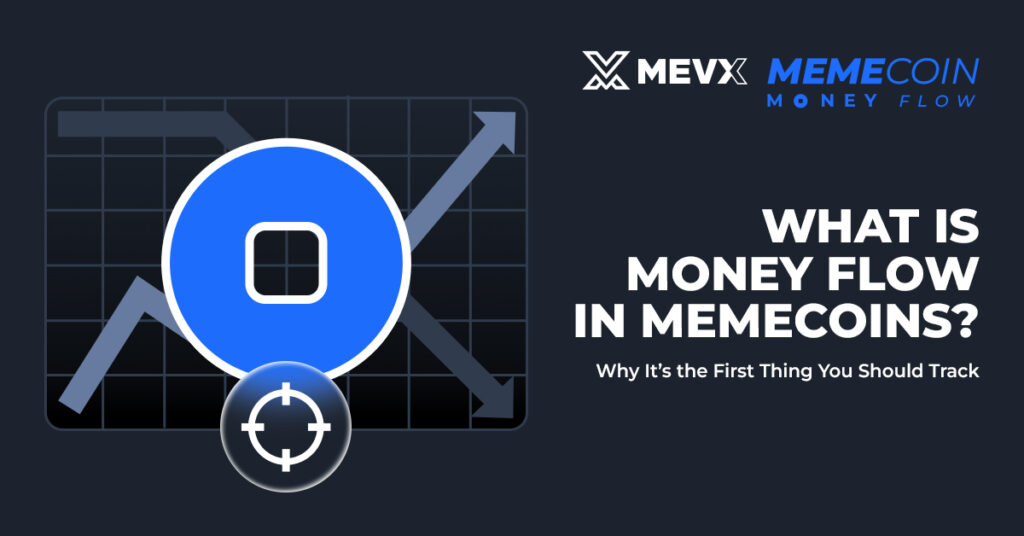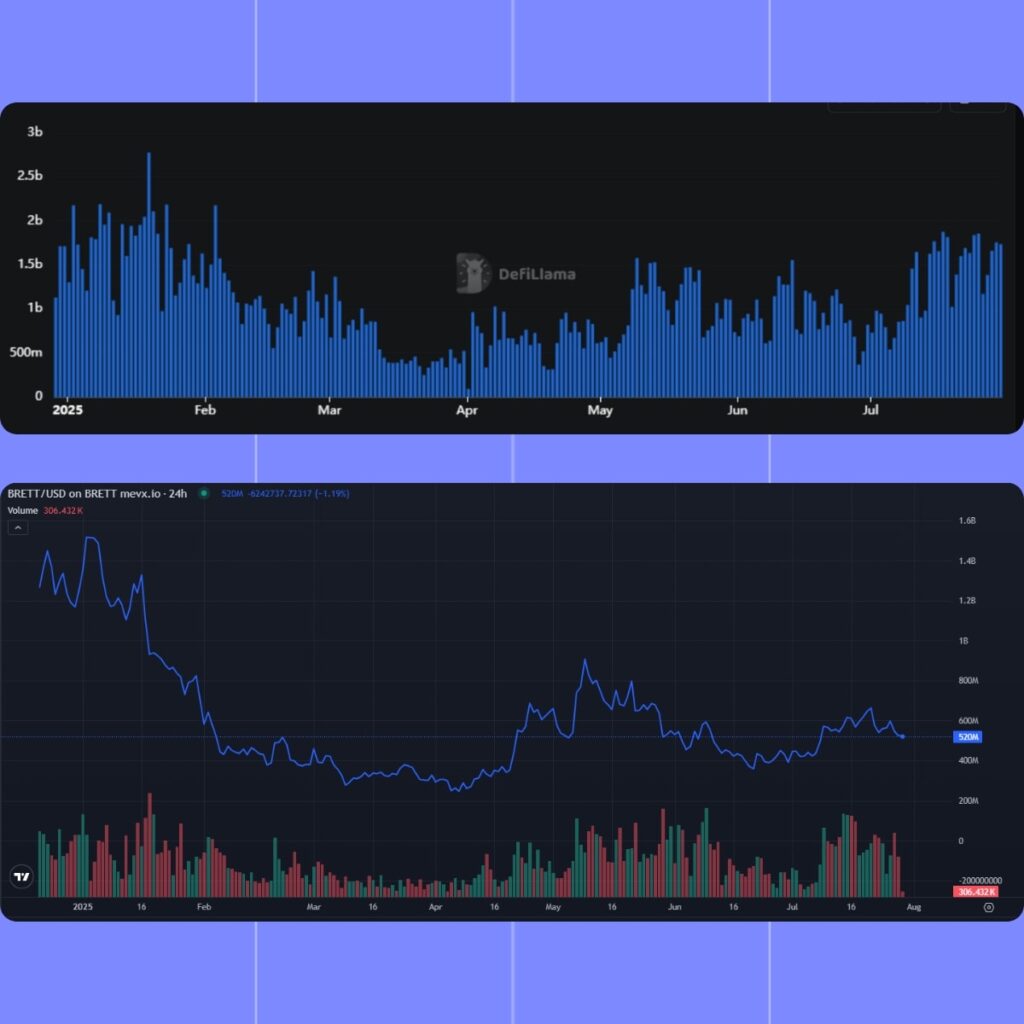Every day, hundreds of new memecoins launch across different chains. Most go unnoticed. Some go 5x in hours. A few vanish just as fast.
To the average trader, it all seems random, driven by hype, memes, and luck. But those who consistently find winners early aren’t guessing. They’re watching where the money is going.

This article is the first in a six-part series that teaches you how to track memecoin money flow in real time. Whether you’re just starting or already active in the space, this guide will help you focus on what actually matters before the pump.
What Do We Mean by Money Flow?
In crypto, money flow refers to how capital moves between chains, tokens, and wallets.
At a macro level, this can include:
- Stablecoins like USDT and USDC are entering a chain (via bridges or CEX deposits)
- Rising trading volume on decentralized exchanges (like Raydium, Uniswap, or Aerodrome)
- Clusters of wallets buying into the same token around the same time
- A rise in Total Value Locked (TVL), reflecting fresh liquidity on-chain
These signals help us see where attention and money are starting to build. But to trade memecoins effectively, we have to zoom in even further.
What really matters is what’s happening at the token level.
Micro-Level Flow: How Capital Enters a Meme Token
Memecoins don’t have products or roadmaps. They move because of speculation. And speculation requires liquidity.
When a meme coin starts attracting capital, we can often spot it through a few very specific signals:
- A handful of new wallets begin entering the token for the first time
- One or more whales open large positions
- Token volume increases without a corresponding spike in price
- Liquidity deepens, slippage drops, suggesting fresh capital is providing backing
- Wallet clusters (groups of addresses) buy in within the same window
These are all signs that capital is flowing into the token. And when you start seeing them before a price breakout, you’re no longer chasing, you’re early.
Price Is a Lagging Signal
Most traders react to price. They see a token up 60% and jump in because it’s trending.
But smart traders track the signals that come first. And those signals nearly always show up in money flow:
- Volume increases quietly
- Wallets buy in clusters
- Liquidity strengthens
- Known addresses reappear
Price is the final result of that process. By the time it’s obvious, the risk is often higher and the opportunity smaller.
Real Examples: Fartcoin and Brett
Let’s look at two meme tokens that followed this exact pattern in 2025: Fartcoin on Solana and Brett on Base.
Fartcoin: Wallets Before the Run

Fartcoin launched in January and saw a quick pump, followed by a sharp drop. For most of Q1, it looked like it was finished.
But in April, on-chain activity started to change:
- New wallets were buying in again
- Trading volume increased day by day
- Known whales returned
- DEX liquidity improved significantly
There was no big announcement. Just capital flowing in again.
By July, Fartcoin had climbed from under $400 million to over $1.6 billion in market cap. And the early signals, the wallets, the volume, the liquidity, had been there for weeks.
Brett: Flow Comes First

Brett, a leading meme token on Base, had a similar story. It had cooled off in Q1, with little movement in price or activity.
Then in May, Base DEX volume began rising again. Traders returned, and Brett started showing early signs of interest:
- Wallet clusters formed on the token
- Volume increased without major volatility
- Liquidity pools deepened
Shortly after, Brett was back in motion, trending again, gaining new holders, and reclaiming market cap.
How to Use Money Flow Before You Buy
Before entering any meme coin, ask yourself:
- Are new wallets buying this token right now?
- Are any large wallets (or known snipers) active?
- Is volume increasing even if price hasn’t moved?
- Has liquidity recently improved?
If these signs are present, there’s a good chance you’re seeing real momentum build. If not, the move may already be over, or never arrive.
Why This Is the First Thing You Should Learn
In memecoins, price moves fast, but money always moves first.
That’s why tracking money flow is the foundation of any repeatable meme trading strategy. Not influencer posts. Not Telegram hype. Just wallets, volume, and liquidity.
Throughout this series, we’ll show you how to:
- Read token-level volume and velocity
- Follow whale wallets in real time
- Detect wallet clustering before breakouts
- Decode the narrative that drives speculative flows
- Tie it all together with a live case study
But it starts here, with learning how to follow the money.
Conclusion
Memecoins may look like chaos from the outside, but under the surface, they respond to the same laws as the rest of crypto: when money flows in, price follows.
The earlier you learn to track that flow, the better your entries, the faster your exits, and the fewer mistakes you’ll make chasing noise.
In the next article, we’ll go deeper into volume and liquidity and how to use them to predict when a token is about to move.
Let me know if you’d like this version exported or formatted for blog upload.
Share on Social Media:
